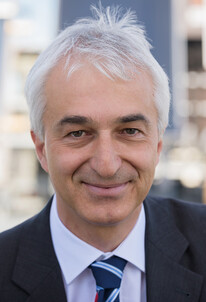Publication
Messung der Wärmekapazität von Solarfluiden
In diesem Projekt wurde eine Mess-Apparatur aufgebaut, mit welcher die spezifische Wärmekapazität cp von Wärmeträgerfluiden mit einer Messunsicherheit von ±0.3 % bestimmt werden kann.
Die Apparatur wird im Weiteren für die Qualitätssicherung am SPF eingesetzt, und steht anderen für Mess-Aufträge zur Verfügung. Dies bietet ein grosses Potenzial für Hersteller von Wärmeträgerfluiden, die ihren Kunden genauere Stoffdaten zur Verfügung stellen können, für die Betreiber und Überwacher von grossen Anlagen, welche die Energiebilanz der Anlage genauer überwachen und ausweisen können, sowie für Forscher und Entwickler, die genaue Energiebilanzen von Prototypen erstellen wollen, welche mit anderen Wärmeträgerfluiden als Wasser arbeiten.
Résumé
Un appareillage de mesure permettant de mesurer la chaleur spécifique (cp) de différents fluides caloporteurs avec une précision de ±0.3 % a été construit au cours de ce projet.
Cet appareillage est usuellement utilisé au SPF comme garantie de qualité mais peut également servir pour des contrats de mesure. Un potentiel important est escompté pour tous les fluides caloporteurs autres que l’eau. En particulier, seront intéressés les producteurs de fluide caloporteur souhaitant mettre à disposition de leurs clients les caractéristiques précises de leurs produits, les opérateurs et gérants de grosses installations souhaitant améliorer la précision de leurs bilans énergétiques et améliorer leurs suivis ainsi que les chercheurs et développeurs voulant établir des bilans énergétiques précis pour leurs prototypes.
Summary
In this project a calorimeter was built for the measurement of the specific heat cp of heat transfer fluids with a measurement uncertainty of ±0.3 %.
The apparatus will be used for quality assurance at the SPF, and is available for measuring fluids of third parties as well. This brings significant advantages for manufacturers and suppliers of heat transfer fluids that can deliver physical properties of their fluids with higher accuracy, for facility operators of large systems that can survey the energy balance of their systems with higher accuracy, and for researchers and developers that may determine more accurately the energy balance of prototype systems that use heat transfer media other than water.



